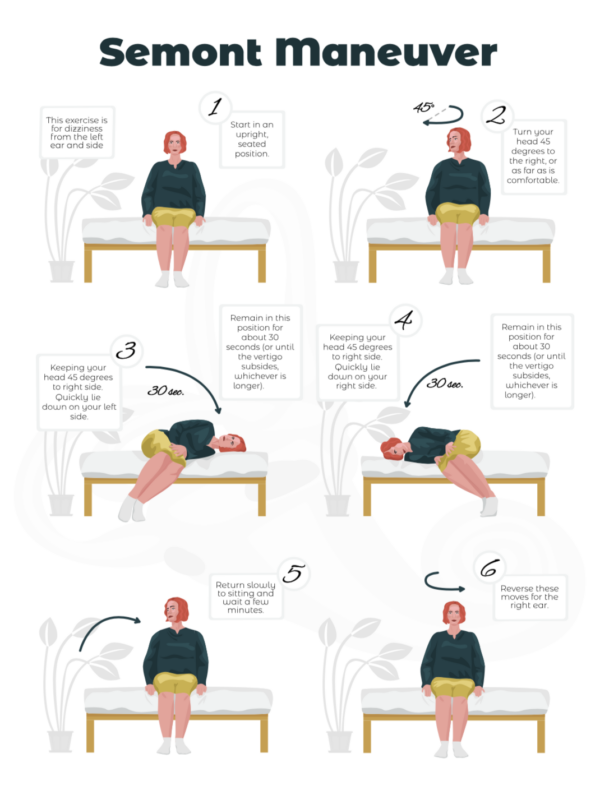
This is not something we typically encounter, but it is likely much more common than we know and just knowing these maneuvers suppy relief is something we need to know.
We all likely are aware of height vertigo, simply because sooner or later, we experience it and learn to avoid it. Even astronauts experience that.
Otherwise this is induced by a physical change in the inner ear caused by mobalized crystals and something like this can help.
Epley Maneuver, Semont Maneuver, and Foster Maneuver for Vertigo
SEPTEMBER 10, 2022 PRINT
https://www.theepochtimes.com/epley-maneuver-semont-maneuver-and-foster-maneuver-for-vertigo_4721655.html
Vertigo – or benign paroxysmal positional vertigo (BPPV), the most common type – causes patients to feel dizziness and can sometimes lead to injury due to falls, but can be treated with techniques known as epley maneuver, semont maneuver, and foster maneuver.
In vertigo, small crystals of calcium become loose in the inner ear, which is part of your balance system. People over the age of 60 are at the highest risk for vertigo.
You should always see your doctor for vertigo treatment. They can even show you how to complete some of these maneuvers in order to help you obtain relief. Let’s take a look at these common techniques to improve vertigo-induced dizziness.
Epley Maneuver for Vertigo
To perform the epley maneuver, you should sit on the edge of your bed and turn your head 45 degrees to the side of the ear your vertigo stems from (either the right or the left). Place a pillow so that when you lay down it is resting beneath your shoulders and not your head.
Now quickly lay down with your head still at a 45-degree angle and stay there until the vertigo stops (around 30 seconds). Now turn your head 90 degrees into the opposite direction without raising it and wait another 30 seconds.
Then, turn your body in the direction your head is turned to and look at the floor for another 30 seconds. Slowly sit up and remain on the bed for a few minutes.
You should complete this maneuver two or three times a night prior to bed until you’ve gone a full 24 hours without dizziness.

The Semont Maneuver for Vertigo
This maneuver is very similar to the epley maneuver. You will still need to sit on a bed, turn your head 45 degrees, and quickly lay down, but this time you lay down on your side. The difference is, you must now quickly move into the opposite direction of your bed while maintaining your head at a 45-degree angle and look at the floor.
You should complete this maneuver two or three times a night prior to bed until you’ve gone a full 24 hours without dizziness.
Half Somersault or Foster Maneuver for Vertigo
Start by kneeling down and looking at the ceiling for a few seconds. Now touch the floor with your head, tucking your chin inward, so your head moves towards your knees. Wait for the vertigo to stop.
Now turn your head in the direction of the affected ear and wait for another 30 seconds. Quickly raise your head to be leveled with your back. You are on all fours now – your head should still be at a 45-degree angle. Wait for another 30 seconds.
Quickly raise your head so it is fully upright, but your head should still be turned towards your shoulder. Then very slowly come up to your feet.
This move can be repeated with at least 15 minutes in-between sets.
For maximum benefits, avoid tilting your head too far up or down after performing these maneuvers. If you don’t notice any difference after a week of performing these maneuvers, go in and see your doctor.
They may guide you through the exercises to see if you are performing them correctly or offer another remedy.
No comments:
Post a Comment